A properly draining tub is essential for both convenience and hygiene. When water flows freely, it prevents the buildup of germs and bacteria that thrive in stagnant water, ensuring a cleaner and more pleasant bathing experience. Conversely, a slow-draining tub can lead to several common issues, including standing water, soap scum buildup, and unpleasant odors. These problems make your bathroom unhygienic and detract from its aesthetic appeal.
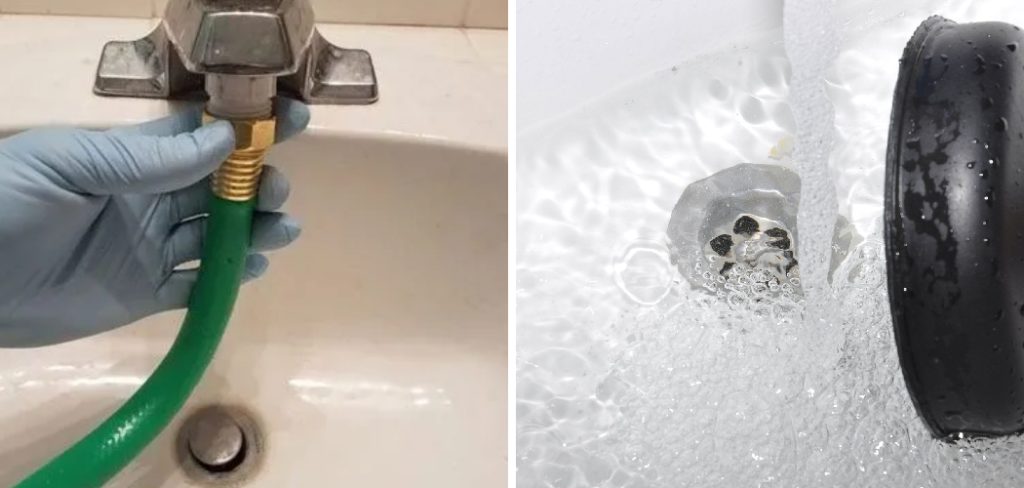
Fortunately, various methods are available to address this issue. This guide will walk you through different techniques on how to fix slow draining tub, ranging from simple home remedies to more advanced mechanical methods. Following these steps ensures your tub drains efficiently, maintaining a healthier and more enjoyable bathroom environment.
Identifying the Cause of Slow Drainage
Common Causes of Slow Drains
One of the most frequent causes of a slow draining tub is the buildup of hair and soap scum within the drain. Over time, hair that is shed during bathing can accumulate and form dense clumps that obstruct the water flow. The same goes for soap scum, which is created from a combination of soap, shampoo, and hard water minerals. This residue can adhere to the sides of the pipes, gradually narrowing the passage and impeding drainage.
Another common culprit is foreign objects and debris that find their way into the drain. This can include items such as small toys, jewelry, or pieces of a bath sponge. These objects can become lodged in the drainpipe, causing partial or complete blockages. Recognizing these common causes is the first step in effectively addressing the issue of a slow-draining tub.
Inspecting the Drain
A visual inspection of the drain opening is essential to identify the cause of slow drainage. Start by removing any visible blockages from the surface, such as clumps of hair or debris around the drain cover. Sometimes, the problem is immediately evident and can be resolved with simple tools like a pair of tweezers or a gloved hand.
Next, remove the drain stopper to gain deeper access to the drainpipe. This allows for a closer examination of potential blockages within the pipe itself. With the stopper out of the way, use a flashlight to look down the drain and inspect for any obstructions. This step is crucial, as it helps determine whether the blockage is close to the surface or further down the pipe, guiding you toward the appropriate method for clearing the drain efficiently.
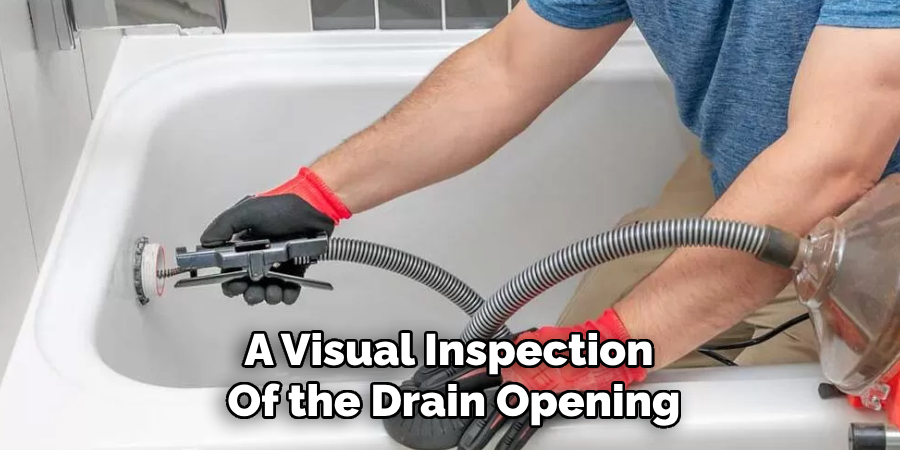
Using Simple Home Remedies
Boiling Water
One of the easiest and most accessible methods for addressing a slow-draining tub is pouring boiling water down the drain. The high temperature of the water helps dissolve soap scum, grease, and other residues that may be causing blockages. To do this, simply boil a large pot of water and carefully pour it directly into the drain in two to three stages, allowing the hot water to work its way through the pipes. However, use caution with this method as older or plastic pipes can be damaged by extreme heat. Confirming that your plumbing is compatible with boiling water before proceeding is essential.
Baking Soda and Vinegar
Baking soda and vinegar are a dynamic duo for natural and non-toxic drain cleaning solutions. Begin by pouring a half-cup of baking soda down the drain, followed by a full cup of white vinegar. Combining these two substances creates a chemical reaction that fizzles and works effectively to break down clogs and debris. Allow the mixture to sit in the drain for about 15 to 20 minutes. During this time, the fizzing action will help to dislodge any blockages. After waiting, pour a pot of boiling water down the drain to flush out the loosened material. This method is not only effective but also environmentally friendly, making it a preferred option for those avoiding harsh chemicals.
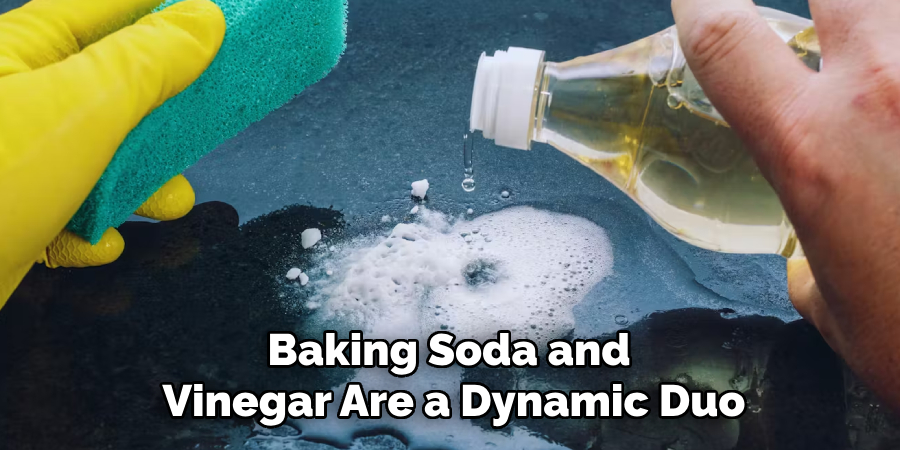
Plunger Method
The plunger method is a tried-and-true technique for clearing blockages in a slow draining tub. To use this method effectively, first, ensure there is enough water in the tub to cover the bottom of the plunger. This water assists in creating a seal and forming the necessary suction. Place the plunger over the drain hole, push down firmly, then pull up sharply. Repeat this action several times to build up pressure in the pipes. The suction created by the plunger can help dislodge any blockages obstructing the drain.
For optimal results, make sure to seal the overflow holes. You can do this by covering the holes with a wet cloth or using duct tape. This step is crucial as it prevents air from escaping and ensures the suction power is concentrated on the blockage. Keep plunging for a few minutes and then check to see if the water drains more freely. If necessary, repeat the process until the drain is clear. The plunger method is effective for many types of blockages and can save you a call to the plumber.
These simple home remedies can often resolve slow-draining issues without professional intervention, making plumbing tasks easier and more affordable.
How to Fix Slow Draining Tub: Mechanical Methods for Clearing the Drain
Drain Snake or Auger
A drain snake, a plumber’s auger, is a flexible, coiled wire tool designed to reach deep into the drain and break up or retrieve obstructions. The end of the snake typically has a corkscrew-like auger that can latch onto or dislodge blockages within the pipe. This tool is highly effective for dealing with stubborn clogs that home remedies cannot easily resolve.
To use a drain snake, start by inserting the end of the snake into the drain opening. Carefully feed the snake into the drain while turning the handle clockwise to help the auger navigate through bends in the pipe. When you encounter resistance, it means you’ve likely reached the blockage. Continue turning the handle to either break up the clog or retrieve it. Once the blockage is cleared, slowly retract the snake, bringing any trapped debris. Finally, run hot water down the drain to flush out any remaining particles.
Wire Hanger
A straightened wire hanger can be a handy, low-cost tool for removing hair and debris from your drain. While not as sophisticated as a drain snake, it can be surprisingly effective for blockages near the surface.
First, use a wire hanger to untwist and straighten it, leaving a small hook at the end. Carefully insert the hook into the drain opening, maneuvering it to catch hair and other debris. Be cautious to avoid scratching the inner sides of the pipe, as this can cause damage. Gently pull the hanger out, bringing the clog with it. Repeat this process until you no longer retrieve debris and the water begins to drain more freely. After using the hanger, flush the drain with hot water to ensure any remaining particles are washed away.
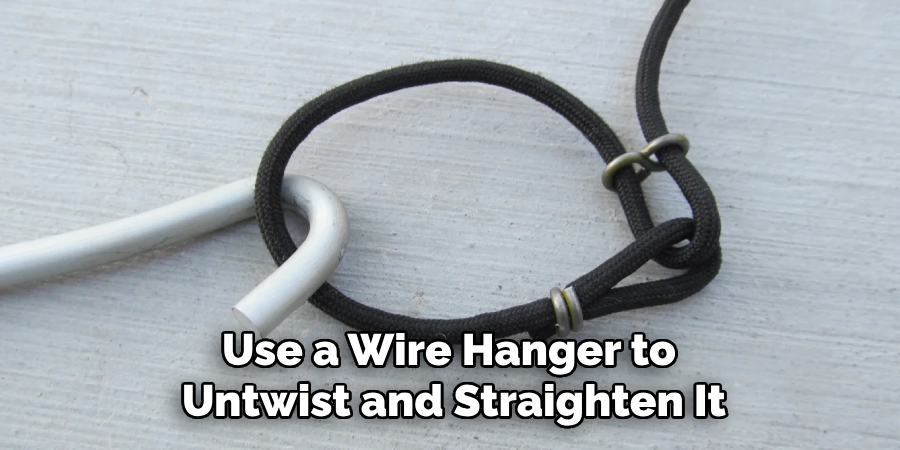
Wet/Dry Vacuum
A wet/dry vacuum can be an effective tool for sucking out blockages from your drain. This method works well for both minor and more substantial clogs.
First, switch it to the wet mode to set up your wet/dry vacuum. Ensure that the filter is suitable for wet usage to prevent damage to the vacuum. Place the hose end over the drain opening and create a tight seal to maximize suction power. You may need to use a wet cloth or duct tape to cover overflow holes and enhance the seal.
Turn on the vacuum and allow it to run for several minutes. The strong suction should pull up the blockage from the drainpipe. Once the clog is removed, turn off the vacuum and check the drain. If necessary, repeat this process until the water drains efficiently. Finish by running hot water down the drain to ensure all debris is flushed away.
Using these mechanical methods can resolve even the most stubborn blockages, keeping your tub draining smoothly without needing professional help.
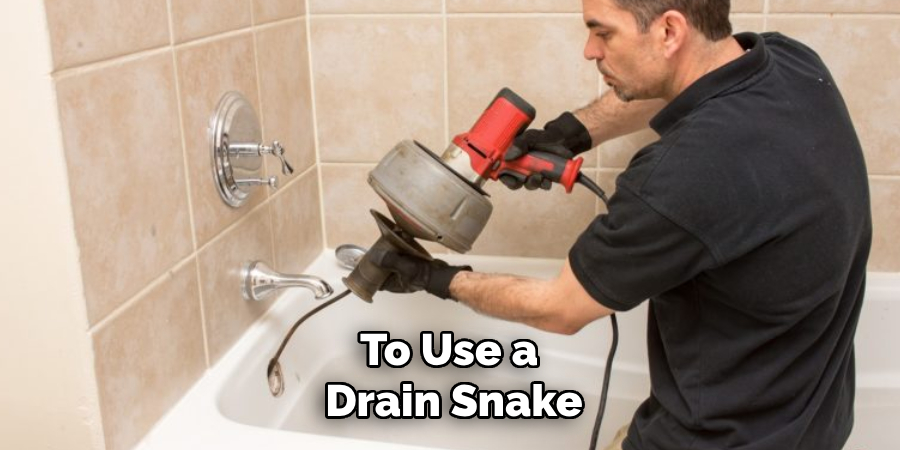
How to Fix Slow Draining Tub: Chemical Drain Cleaners
Choosing the Right Chemical Cleaner
When selecting a chemical drain cleaner, it’s crucial to understand the type of clog you’re dealing with and the material of your plumbing system. Chemical drain cleaners typically come in three types: acidic, caustic, and enzymatic. Acidic cleaners contain strong acids like sulfuric acid and are effective against tough clogs; however, they can be hazardous and require careful handling.
Caustic cleaners, which often contain substances like lye, work well on grease and soap build-ups but can cause damage to certain types of pipes. Enzymatic cleaners are gentler and environmentally friendly, utilizing natural enzymes to break down organic materials, making them a safer option for routine maintenance.
Using Chemical Cleaners Safely
To use chemical drain cleaners safely, carefully read and follow the manufacturer’s instructions. Ensure that you are wearing protective gear, such as gloves and goggles, to prevent chemical burns or eye irritation. Ventilate the area well by opening windows or using exhaust fans. Pour the recommended cleaner into the drain, avoiding any splashes. Allow the cleaner to sit for the specified time, typically 15 minutes to several hours, depending on the product and severity of the clog. Finally, flush the drain with plenty of water, ensuring no residual chemicals remain. Adhering to these guidelines can help clear your drain effectively while maintaining safety.
Preventive Measures
Regular Maintenance
Routine cleaning of your drains is essential to prevent buildup of hair, soap scum, and other debris that can eventually cause blockages. One effective method for regular maintenance is to periodically pour boiling water down your drains. This helps dissolve and wash away any minor accumulations before they become significant problems.
Additionally, using a homemade so baking soda and vinegar solution of baking soda and vinegar can neutralize odors and break down organic material. Simply pour half a cup of baking soda, followed by an equal amount of vinegar, into the drain, let it sit for about 15 minutes, and then flush with hot water.
Drain screens or guards are also a simple yet effective measure for catching hair and other large particles before they enter the drainage system. These are inexpensive, easy to install, and can be cleaned and replaced. Keeping these preventive measures in mind will help maintain the longevity and efficiency of your plumbing system.
Proper Disposal Practices
Proper disposal practices are crucial in preventing drain blockages. Avoid pouring grease, oils, or fats down the drain as they can solidify and cause significant buildup over time. Instead, collect these substances in a container and dispose of them in the trash. Particles of food, coffee grounds, and other kitchen debris should also be kept out of your sinks. Using a sink strainer can help catch these particles, which can then be emptied into the bin.
Educating household members on best practices for drain use is equally important. For instance, recommend that hair is collected and thrown in the trash rather than being left to wash down the bathroom drain. Teaching children and other family members to be mindful of what goes down the drain can contribute significantly to avoiding future plumbing issues. Implementing these proper disposal practices can greatly minimize the risk of clogs and keep your drains running smoothly.
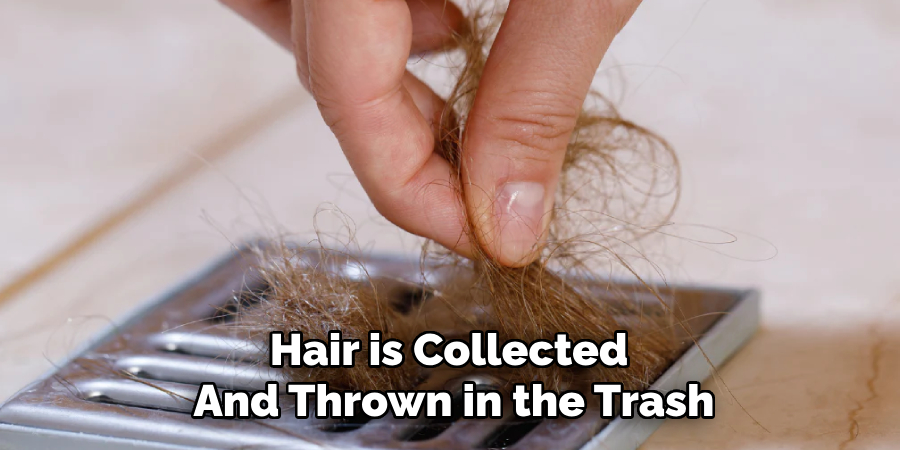
When to Call a Professional
Recognizing the Signs
Sometimes, despite your best efforts, a drain issue persists, indicating the need for professional assistance. Signs that it’s time to call a plumber include persistent clogs that do not clear even after multiple attempts with mechanical or chemical methods and slow drainage, which remains an issue despite your efforts. Additionally, if foul odors or unusual sounds come from your pipes, these could signal deeper, more complex problems.
Benefits of Hiring a Professional
Hiring a professional plumber offers numerous advantages, particularly for complex or recurring issues. Professionals have access to advanced tools and expertise that can diagnose and resolve underlying problems more effectively and safely than DIY methods. They can also provide long-term solutions, preventing future issues and potentially saving you money in the long run.
Cost Considerations
While professional services come at a cost, weighing this against the potential expenses of recurring or worsening problems is essential. When seeking a reliable plumber, consider recommendations from friends or online reviews, and ensure they are licensed and insured. Getting multiple quotes can also help you find a service that fits your budget without compromising on quality.
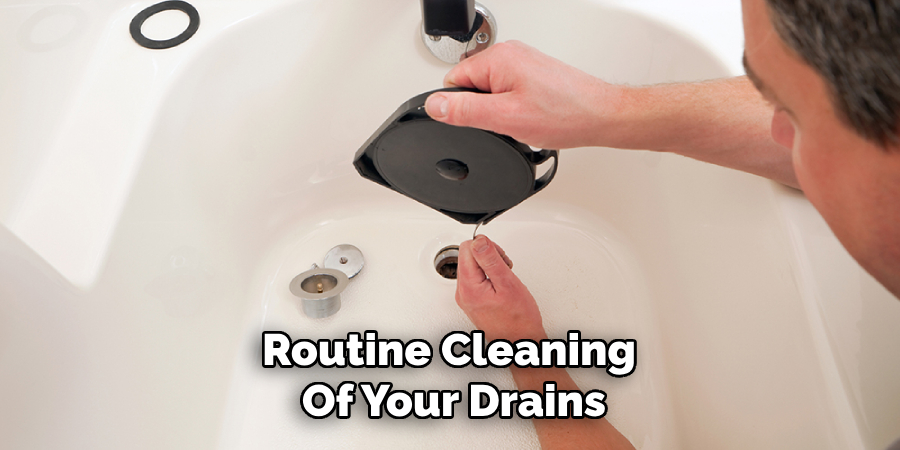
Conclusion
In conclusion, understanding how to fix slow draining tub involves a combination of mechanical methods, chemical cleaners, and preventive maintenance. We’ve discussed using tools such as plungers and drain snakes to physically remove clogs, as well as choosing the right chemical cleaners based on your plumbing type and the nature of the blockage. Regular maintenance, including boiling water treatments, homemade solutions like baking soda and vinegar, and proper disposal practices can significantly reduce the likelihood of future blockages. Emphasizing regular maintenance and correct usage extends the longevity of your plumbing system and ensures efficiency.
Addressing drain issues promptly is crucial to prevent minor problems from escalating into major repairs. By following these guidelines on how to fix a slow-draining tub, you can maintain a smoothly running bathroom and avoid unnecessary expenses or disruptions.